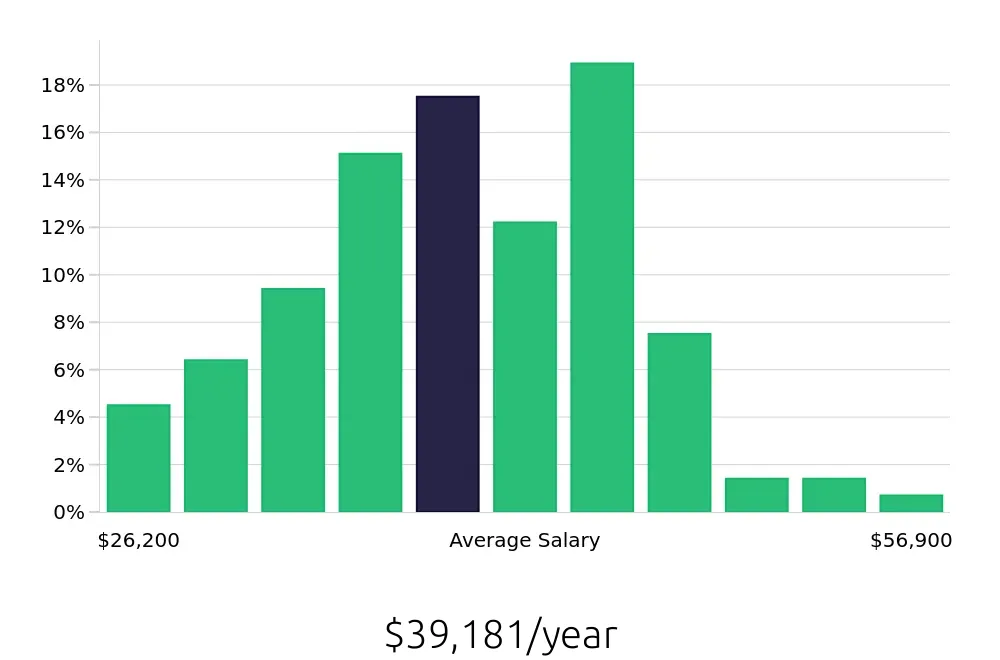Position
Overview
A Meat Cutter works in grocery stores, butcher shops, and supermarkets. They prepare meat for customers by cutting, trimming, and wrapping it. They ensure the meat looks appealing and is easy to use. Meat Cutters also label the meat with prices and sell dates. They work with different types of meat, including beef, pork, poultry, and fish.
Meat Cutters must follow safety and hygiene rules. They use sharp knives and tools. They keep the work area clean to prevent contamination. Meat Cutters often work with other staff to meet customer needs. They may also help with stocking shelves and cleaning the store. This job requires attention to detail and the ability to work quickly and efficiently.
Becoming a meat cutter involves a series of steps that lead to a rewarding career in the food industry. This profession requires skill and attention to detail. It is a great choice for those who enjoy working with food and have a knack for precision. Follow these steps to start your journey as a meat cutter.
First, gain a high school diploma or equivalent. This is the basic requirement for most entry-level jobs. Next, look for on-the-job training opportunities. Many meat cutters learn through apprenticeships at grocery stores or butcher shops. This hands-on experience is crucial for mastering the necessary skills. After gaining some experience, consider taking a certification course. This can enhance your resume and show potential employers your commitment to the trade. Look for courses that cover meat cutting techniques, food safety, and knife skills. Finally, build a strong work ethic and attention to detail. These traits will help you succeed in this fast-paced environment.
To advance in the field, continue learning and improving your skills. Attend workshops and seminars to stay updated on the latest techniques and trends. Networking with other professionals can also open doors to new opportunities. By following these steps, you can build a successful career as a meat cutter.
The journey to becoming a meat cutter can vary. Most people start with on-the-job training. This training often takes a few weeks to a couple of months. Employers usually provide this training. It covers the basics of cutting, packaging, and labeling meat. Some meat cutters choose to take formal classes. These classes can be found at vocational schools or community colleges. They usually last from a few months to a year.
Factors like prior experience, the speed of learning, and the type of training can affect the time it takes. Some meat cutters may quickly learn the skills needed. Others may take longer. The goal is to master the techniques and ensure safety and quality in meat preparation. With dedication and practice, anyone can become a skilled meat cutter in a reasonable amount of time.
We are seeking a skilled and detail-oriented Meat Cutter to join our team. The ideal candidate will be responsible for preparing and cutting meat to meet customer specifications, ensuring high-quality products, and maintaining a clean and safe work environment.
Responsibilities:
Qualifications
A career as a meat cutter offers a unique blend of skills and responsibilities. This role involves cutting, trimming, and packaging meat for retail sale. Meat cutters work in grocery stores, butcher shops, and supermarkets. They must follow safety and hygiene standards to ensure the quality and safety of the meat products. This job requires attention to detail and the ability to work quickly under pressure.
Choosing a career as a meat cutter has its own set of advantages and challenges. Here are some pros and cons to consider:
Meat cutters play a vital role in the food industry. They ensure that customers receive fresh and properly prepared meat. This job can be rewarding for those who enjoy working with their hands and are passionate about food quality.
The job outlook for meat cutters remains steady, offering a reliable career path. The Bureau of Labor Statistics (BLS) reports an average of 41,700 job positions available each year. This consistent demand makes it a stable choice for those seeking employment in the food industry.
Job openings for meat cutters are expected to change by just 0.1% from 2022 to 2032, according to the BLS. This small change indicates a stable job market. Job seekers can expect a steady number of opportunities in this field. The average national annual compensation for meat cutters is $38,350, providing a decent income. The average hourly wage stands at $18.44, offering a fair return for the work done.
Meat cutters play a vital role in the grocery and retail sectors. Their skills are essential in preparing meat products for customers. This job not only offers stability but also provides a chance to work in a dynamic environment. With the right training, job seekers can find good opportunities in this field.
